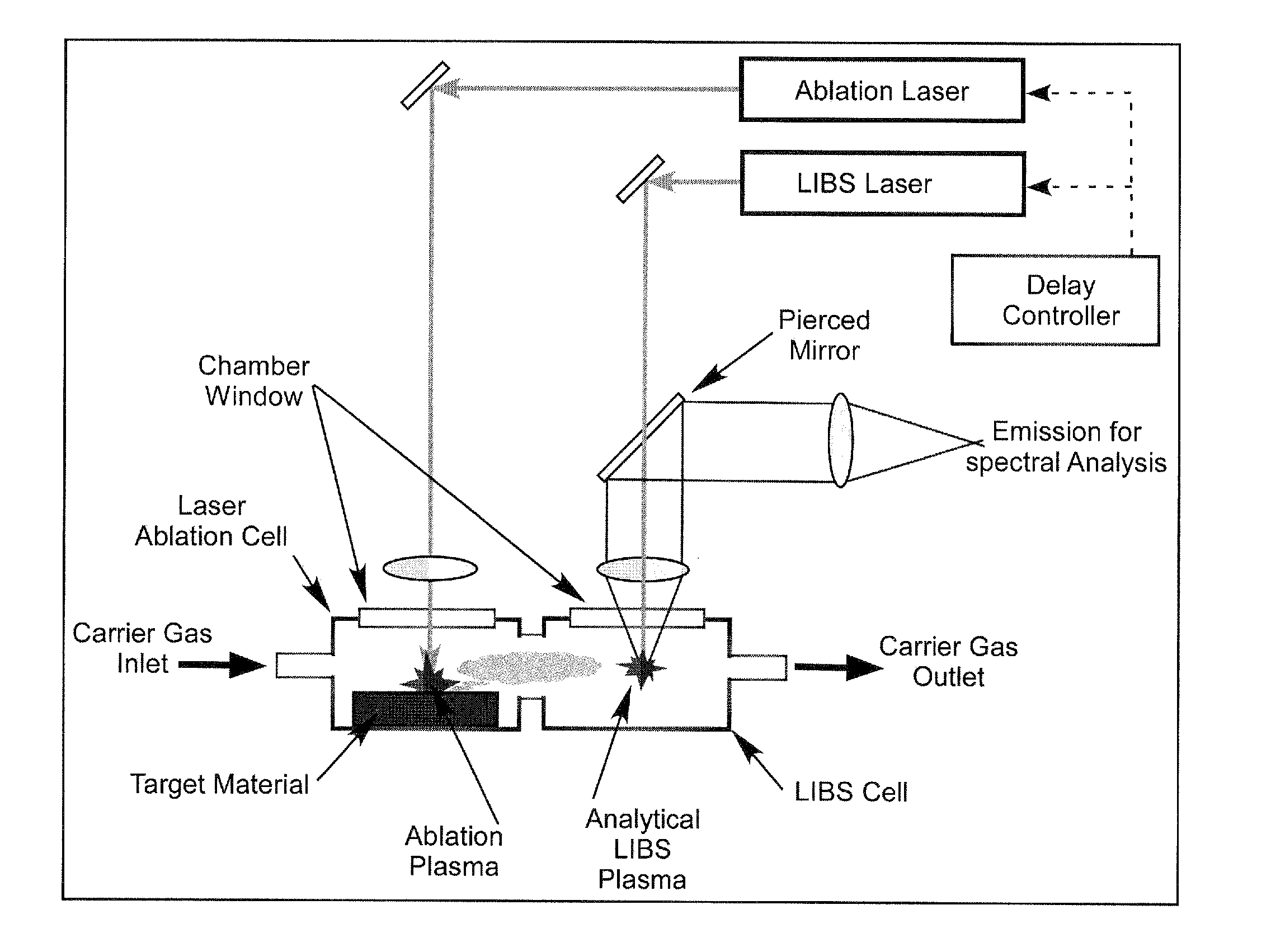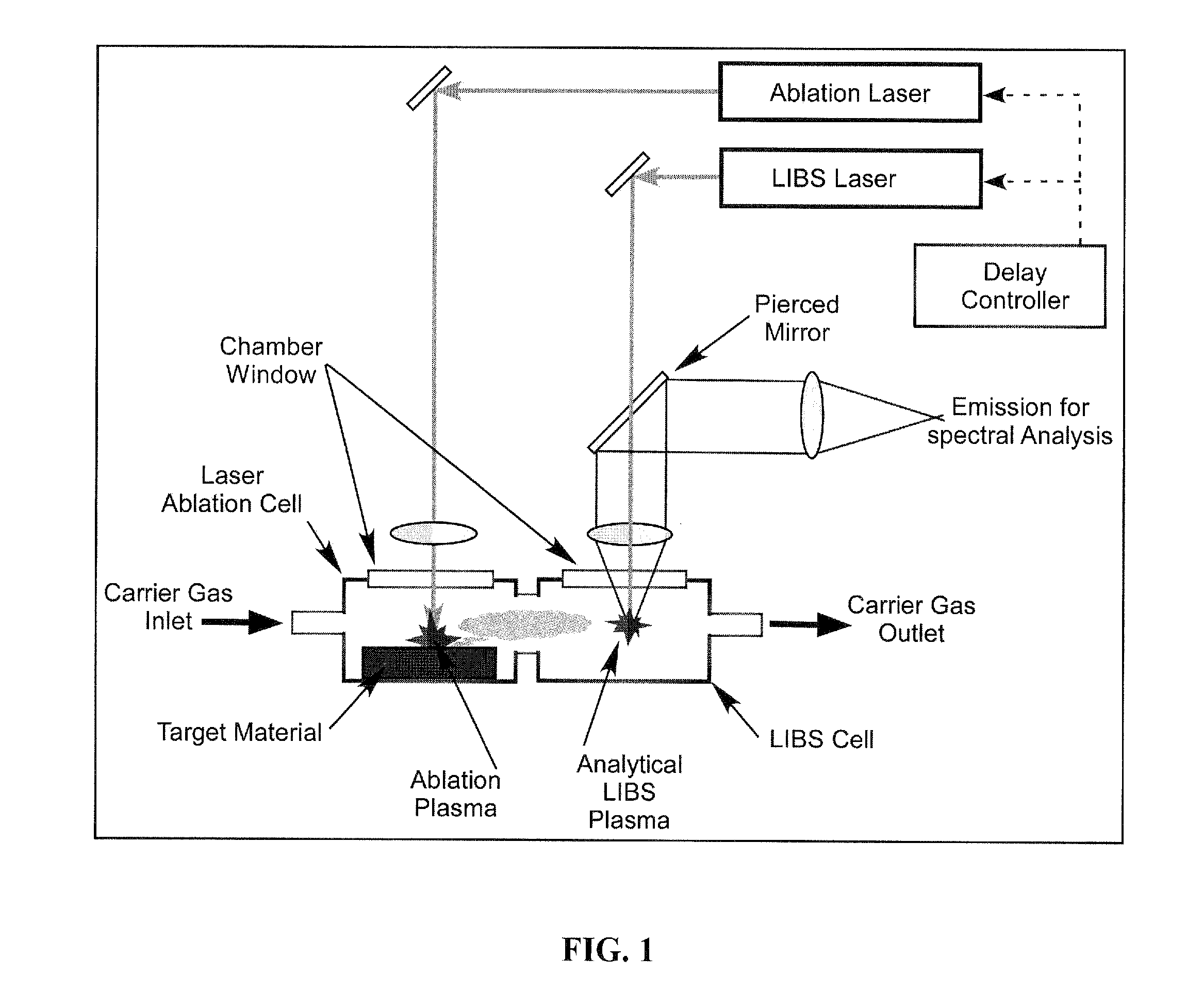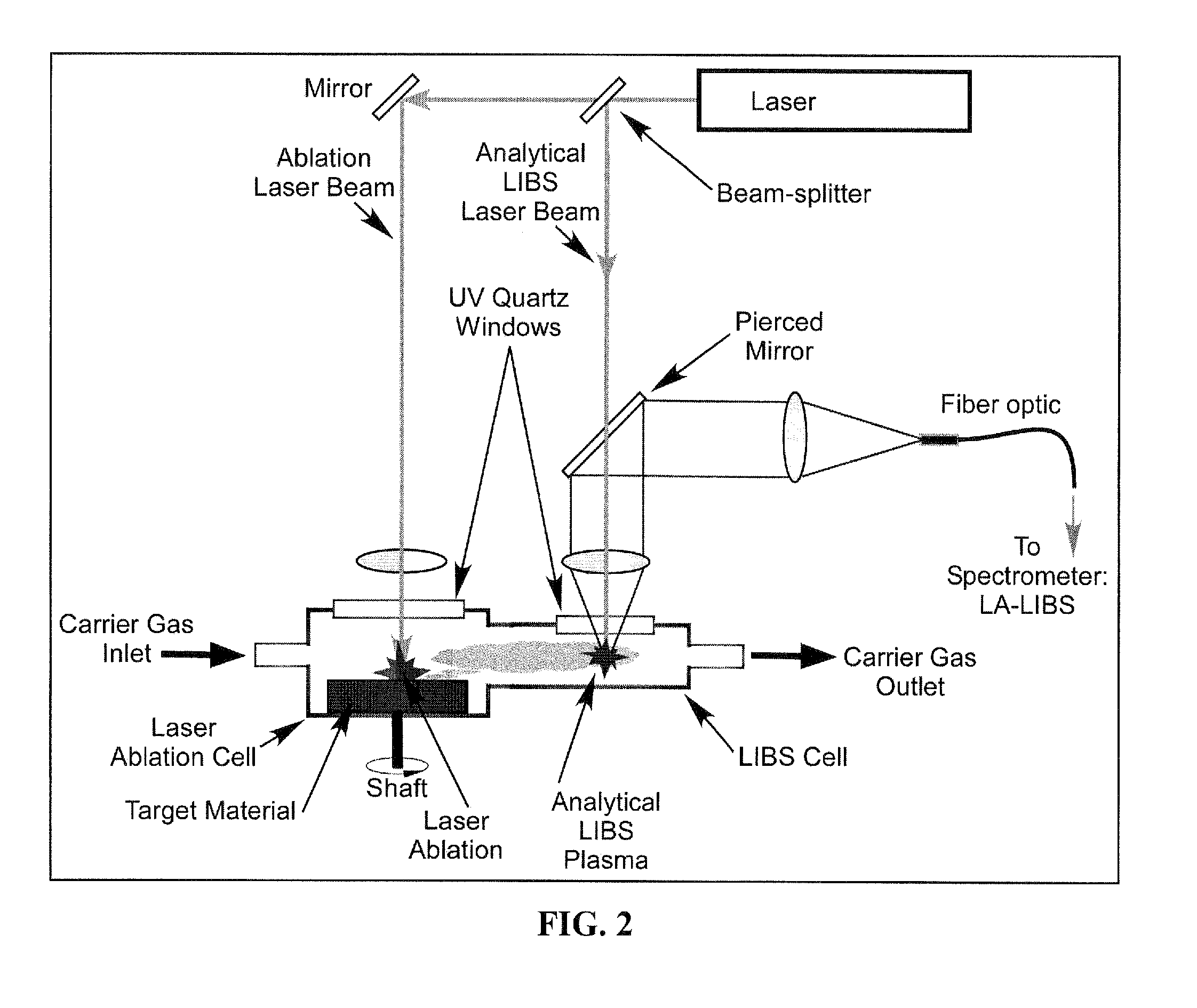Method and apparatus to laser ablation-laser induced breakdown spectroscopy
- Summary
- Abstract
- Description
- Claims
- Application Information
AI Technical Summary
Benefits of technology
Problems solved by technology
Method used
Image
Examples
example 1
[0035]Seven standard reference materials were investigated, in which 5 elements (Al, Mn, Mg, Fe, and Cu) were analyzed. Four of the standards were from the National Institute of Standards and Technology (NIST), namely NIST-1242 (a cobalt-chromium rich high temperature alloy), NIST-1276a (a cupro-nickel alloy), NIST-1297 (a stainless steel), and NIST-1761 (a low alloy steel). Three samples were cast aluminum standards from Apex Smelting Company (SM-9, SM-10 and S-11). Table 1 gives the certified concentration values, in percentage by mass, for the 5 selected analyte species in all seven standards, as well as other dominant elements present in sample matrix. All the standards were machined into sample coupons (square or round) with a diameter of 2.5 cm and a thickness of 2 to 3 mm.
TABLE 1Concentration (% by mass) of the five analytical elements present ineach certified standard, along with other prominent elements.Concentration (% by mass)Apex Smelting Co.NISTElementSM-9SM-10S-1112421...
example 2
[0052]The effects of carrier gas were examined using the same experimental conditions for Example 1 for the SM-10 reference sample. The laser ablation LIBS measurements were repeated for a pristine SM-10 sample using the identical experimental methodology, but with the nitrogen carrier gas replaced with a carrier gas flow of pure helium at a rate of 1.5 lpm. While no detailed optimization was performed, a better analyte response was observed for the helium carrier gas, as compared to the nitrogen carrier gas. FIG. 9 presents representative spectra for the laser ablation LIBS measurements as recorded in nitrogen and helium carrier gases. Examination of the two spectra reveals a reduction in spectral noise with the change to helium. The signal-to-noise ratio (SNR) was used to assess the improvements in analytical performance with helium. The signal-to-noise values were calculated by taking the ratio of the full-peak area to the rms-noise, as measured from the adjacent continuum emissi...
example 3
[0053]The effects of carrier gas flow rate were examined using experimental conditions similar to Example 1, but with the following changes. The laser ablation event was performed with a frequency-tripled Nd:YAG laser at 355-nm wavelength and pulse energy of 40 mJ / pulse. The analytical laser-induced plasma was created using a fundamental Nd:YAG laser at 1064-nm wavelength and pulse energy of 200 mJ / pulse. The ablation cell was of diameter about 1⅜″ with a height (target to quartz window) of about 0.9″. An inlet of about 3 / 16″ diameter allowed carrier gas to enter the ablation cell and an diametrically opposed outlet of about 3 / 16″ diameter allowed the carrier gas and ablation plume to exit the ablation cell. The exit was directly coupled to an adjoining laser-induced plasma cell by a single tube about 2″ long and about 3 / 16″ diameter. The tube exited directly at the focal spot of the analytical laser-induced plasma, which sampled the ablation plume. The two laser pulses were synchro...
PUM
 Login to View More
Login to View More Abstract
Description
Claims
Application Information
 Login to View More
Login to View More - R&D
- Intellectual Property
- Life Sciences
- Materials
- Tech Scout
- Unparalleled Data Quality
- Higher Quality Content
- 60% Fewer Hallucinations
Browse by: Latest US Patents, China's latest patents, Technical Efficacy Thesaurus, Application Domain, Technology Topic, Popular Technical Reports.
© 2025 PatSnap. All rights reserved.Legal|Privacy policy|Modern Slavery Act Transparency Statement|Sitemap|About US| Contact US: help@patsnap.com



